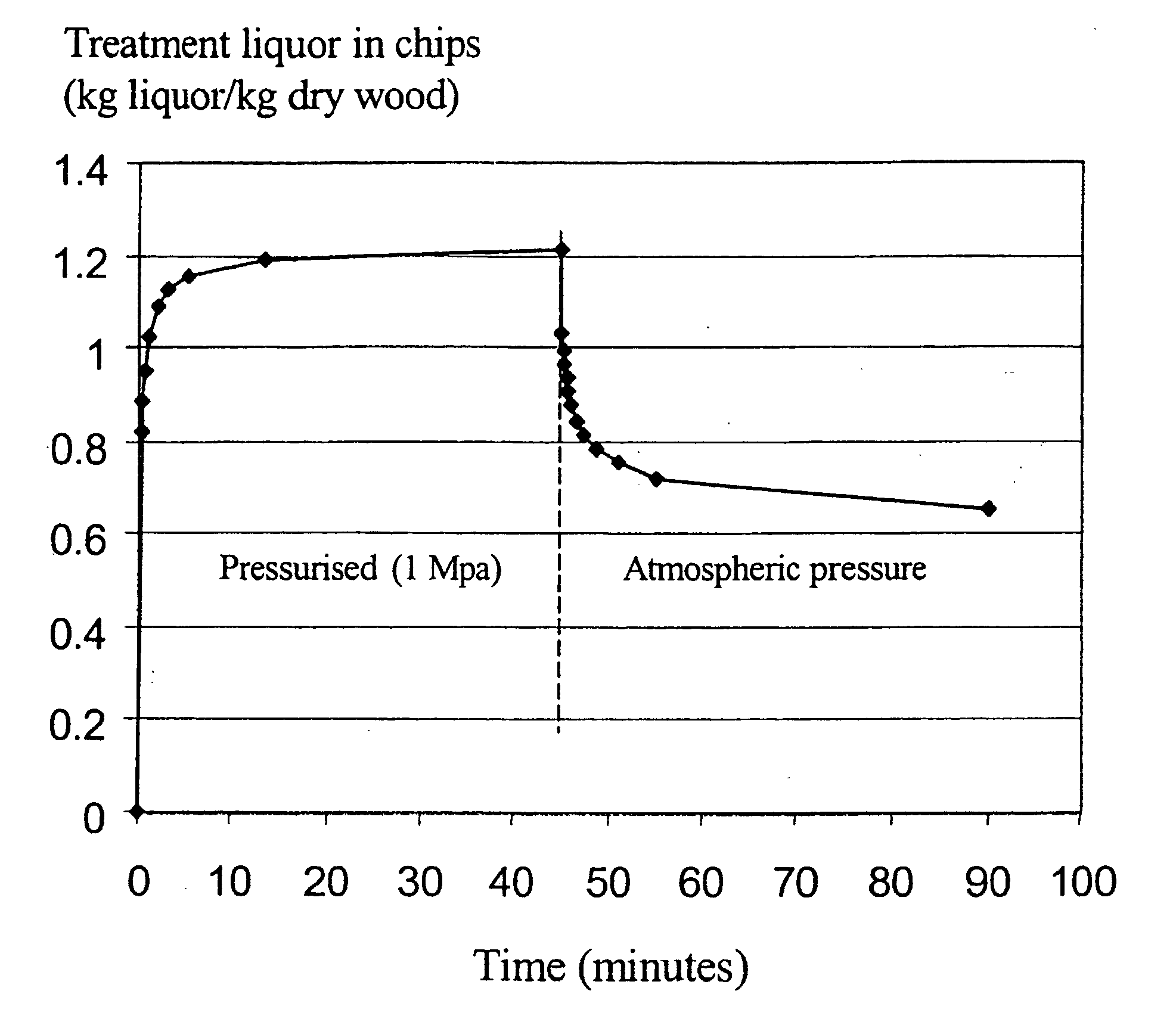Removal of inorganic elements from wood chips
a technology of inorganic elements and wood chips, applied in the field of inorganic elements removal of wood chips, can solve the problems of affecting the production process, affecting the quality of wood chips, so as to achieve the effect of less energy consumption
- Summary
- Abstract
- Description
- Claims
- Application Information
AI Technical Summary
Benefits of technology
Problems solved by technology
Method used
Image
Examples
example 1
[0052] Spruce wood chips (150 g dry weight) were placed in an autoclave (1.5 dm3). The dry content of the chips was 62%. Acid leaching treatment liquor (0.5 g H2SO4 / dm3 water) was added before the lid was put on. The treatment was carried out at 60° C. and preheated diluted sulfuric acid was used and the autoclave was placed in a preheated water bath. Air (not entrapped in the wood chips) remaining in the autoclave was removed by the introduction of the same treatment liquor, through a valve and simultaneous removal of air through a valve placed at the top of the sealed autoclave. When the autoclave was hydraulically filled, the valve at the top was closed and the same treatment liquor was then introduced to the autoclave with a pressure of 1 MPa (e). The amount of liquor entering the autoclave during the pressurizing was measured by weighing. After 45 minutes of pressure, the valve at the top of the autoclave was opened (yielding an atmospheric pressure in the autoclave). The amoun...
example 2
[0053] A series of leaching treatments of spruce wood chips, i.e. full cell impregnation treatment, and pressure impregnation was conducted. When the wood chips were subjected to full cell impregnation treatment an air-removing step (vacuum treatment) prior to the impregnation was included. The spruce wood chips (150 g dry weight) were placed in an autoclave (1.5 dm3). The dry content of the chips was 62%. The autoclave was evacuated for 30 minutes after which diluted sulfuric acid (0.5 g H2SO4 / dm3 water) was sucked in. Thereafter, the autoclave was pressurized for 90 minutes at 1 MPa (e). In the treatments consisting of a pressure impregnation (without any air removing step prior to the impregnation), the chips (150 g dry weight) were placed in the autoclave and the same treatment liquor was added before the lid was put on. Air (not entrapped in the wood chips) remaining in the autoclave was removed by the introduction of the same treatment liquor through a valve and simultaneous r...
PUM
| Property | Measurement | Unit |
|---|---|---|
| pressure | aaaaa | aaaaa |
| temperature | aaaaa | aaaaa |
| temperature | aaaaa | aaaaa |
Abstract
Description
Claims
Application Information
 Login to View More
Login to View More - R&D
- Intellectual Property
- Life Sciences
- Materials
- Tech Scout
- Unparalleled Data Quality
- Higher Quality Content
- 60% Fewer Hallucinations
Browse by: Latest US Patents, China's latest patents, Technical Efficacy Thesaurus, Application Domain, Technology Topic, Popular Technical Reports.
© 2025 PatSnap. All rights reserved.Legal|Privacy policy|Modern Slavery Act Transparency Statement|Sitemap|About US| Contact US: help@patsnap.com


